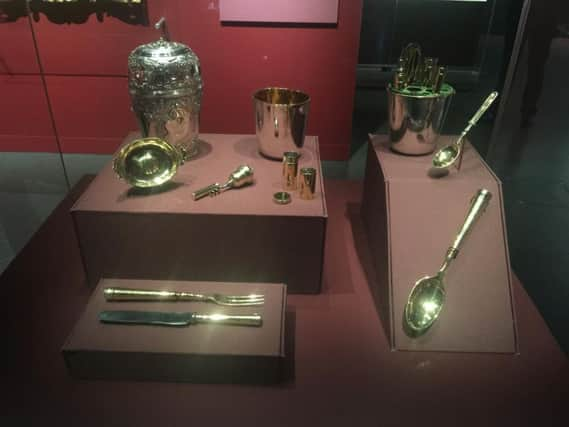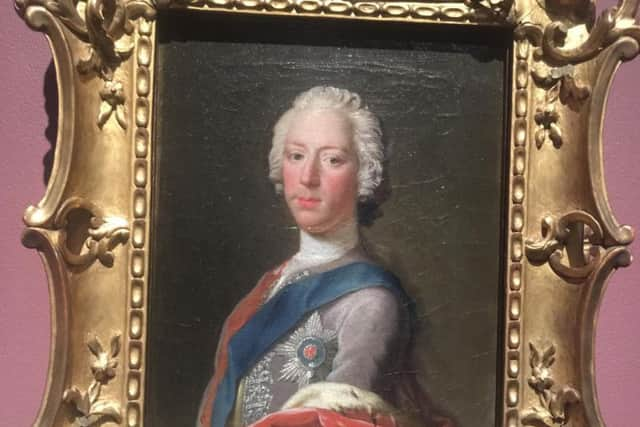Objects from Vatican on display at National Museum's Jacobite exhibition


Precious artefacts linked to the Stuart family, including marble grave markers for Bonnie Prince Charlie, his brother and father, will be on show for the first time in the UK after deals were struck for them to be transported from Italy.
A gold communion set which belonged to Charles Stuart’s brother Henry will also be on display along with more than 350 other objects spanning two centuries.
Advertisement
Hide AdAdvertisement
Hide AdPaintings, costumes, jewellery, documents, weapons and glassware drawn from collections across Europe, including the Louvre in Paris, feature in the show, which will run until November.


It explores the events which unfolded following the religious upheaval in Scotland in the late 17th century and the attempts by the Jacobites to reinstate the deposed Roman Catholic Stuart king, James VI and II, and his heirs to the throne after his exile to France.
The exhibition recalls the five Jacobite challenges to the throne, culminating in Bonnie Prince Charlie’s doomed 1745 campaign, which came to a swift and bloody end at Culloden.
Among the other highlights on display are Charles Edward Stuart’s travelling canteen, a recently discovered lost portrait of the prince and a letter to his father written when he was only eight.
Advertisement
Hide AdAdvertisement
Hide AdDavid Forsyth, principal curator of the exhibition, said: “Charles Edward Stuart is actually the final chapter in a story which starts in 1688 with the deposing of his grandfather, James VII and II of England and Scotland, sending the Stuarts into courtly exile.


“As the exhibition shows, whilst Scotland is the battleground, it is in Europe - first France and latterly in Rome - where the Stuart story unfolds over this period, with courts held, honours dispensed, tributes accepted and campaigns planned.
“The 1745 rising led by Bonnie Prince Charlie is the last of five Jacobite challenges for the thrones of Scotland, England and Ireland.
“The Battle of Culloden in 1746 came to mark the end of any serious prospect of the Stuarts reclaiming their kingdoms, but it is not the end of Charles’s story. His father, James VIII and III, lived another 20 years after Culloden, Charles died in 1788, followed by his younger brother Henry in 1807.”